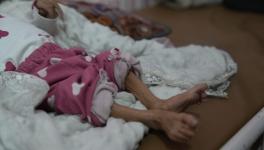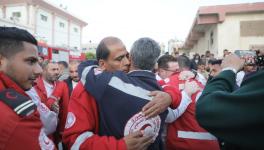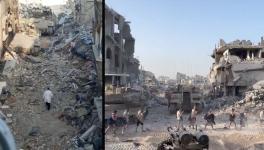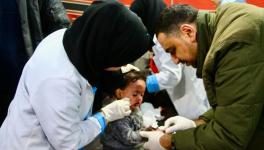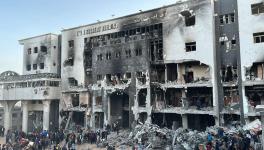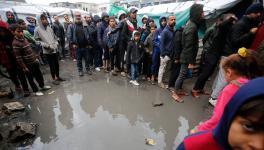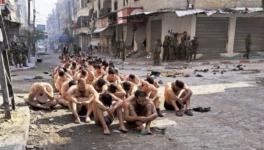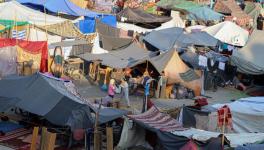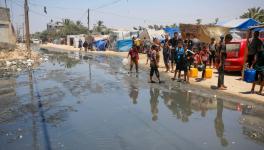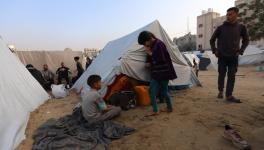Gaza’s Heath Workers and Aid Agencies Face Impossible Choices
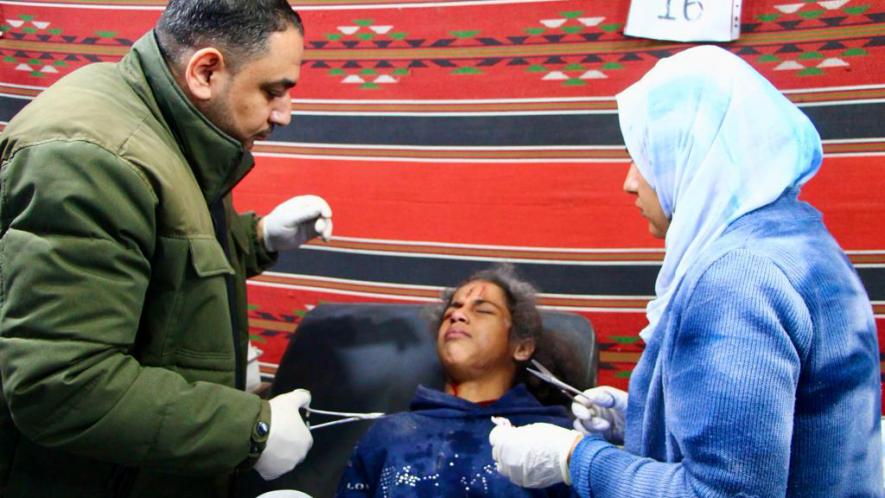
Children were injured as a result of a targeting in the Nuseirat camp in the central Gaza Strip (Photo: Al Awda Health and Community Association)
Triage is the term that most accurately summarizes what is happening to health services in Gaza. Every hour, health workers have to determine who among the dozens of patients lying on the hospital floors should be treated first. Doctors and nurses also have to decide who gets paracetamol or ibuprofen for procedures that would usually be performed while patients are under anesthesia, and who goes without even that.
There is also a third form of triage going on in the proximity of Gaza these days, and that one falls upon the people trying to get supplies into the Strip. Despite reassurances that they would allow aid to be distributed more easily, Israeli authorities are still obstructing deliveries. Knowing that only a fraction of what is needed will eventually be allowed in, international and humanitarian organizations are choosing—very, very carefully—what they will load on to their trucks.
It’s a difficult choice, explained Michael Ryan, Executive Director of the World Health Organization’s (WHO) Health Emergencies Program, during the organization’s beginning-of-the-year press conference. “Do you replace a truck of food with a truck of lab supplies? Which truck has more priority?“
There is no good answer to Ryan’s question. Almost everyone in Gaza is facing food insecurity. All children below the age of 5—335,000 of them—are hungry and facing a lifetime of struggle with the consequences of stunting. Due to the food shortage, more than half of pregnant and breastfeeding women only have access to limited types of food, which impacts theirs and children’s health, according to a testimony by Rohan Talbot from Medical Aid for Palestinians, heard by the International Development Committee of the British Parliament.
On the other hand, the lack of medical supplies, combined with relentless bombardments, has brought about the total collapse of the public health system in Gaza. For decades, the Central Public Health Laboratory in Gaza ensured high-quality public health services. Located north of the Wadi Gaza line, the laboratory is no longer functional. The lack of laboratory capacities means that it is only possible to evaluate the spread of infectious diseases from what is obvious at first glance. There is no way to confirm what are the specific causes leading to e.g. respiratory problems
“We don’t have the means to verify why specific communicable diseases are appearing. We don’t have a way to see what particular pathogen is causing them,” said Teresa Zakaria from WHO’s Health Emergency Program. Because of that, it is impossible to know which measures should be put in place to mitigate the increase in morbidity.
Even if the WHO were able to pinpoint which measures are needed right now, it is extremely unlikely they would be permitted to implement them. Like all other organizations trying to maintain a lifeline to Gaza, the UN’s health agency is not really allowed in. “We have the supplies, the teams, and the plans in place. What we don’t have is access,” said WHO Director-General Tedros Adhanom Ghebreyesus.
The WHO had planned 7 missions into Gaza since December 26, but was forced to cancel all of them as Israel failed to provide security guarantees. It’s not just the WHO’s experience. Of the 21 missions that various UN bodies had planned in January 2024 alone, 16 were canceled because of the lack of cooperation by the Israeli occupation, reported Richard Peeperkorn, head of the WHO’s office for the occupied Palestinian territories.
Meanwhile, the Israeli army continues to target hospitals and other medical infrastructure in Gaza. Four members of the Palestine Red Crescent Society staff were killed on January 10 when Israeli Occupying Forces (IOF) hit their vehicle. Days before, the 5-year-old daughter of a staff member of Médecins Sans Frontières (MSF) died from the consequences of an IOF attack on the shelter where MSF workers and their families were seeking refuge.
Those who are still alive share the faith of their patients. Ghada Al Jadba, UNRWA health officer, stressed to the UK International Development Committee that health workers are themselves displaced, having no safe space to sleep or water to drink. Tents, said Al Jadba, are a luxury. She also said that people were increasingly feeling dehumanized and alienated as a result of Israel’s attacks and, presumably, the unwillingness of the international community to act to stop the genocide immediately.
For those on the ground, safeguarding the remnants of the health system in Gaza is looking more and more like “mission impossible,” as Al Jadba put it.
People’s Health Dispatch is a fortnightly bulletin published by the People’s Health Movement and Peoples Dispatch. For more articles and to subscribe to People’s Health Dispatch, click here.
Get the latest reports & analysis with people's perspective on Protests, movements & deep analytical videos, discussions of the current affairs in your Telegram app. Subscribe to NewsClick's Telegram channel & get Real-Time updates on stories, as they get published on our website.









